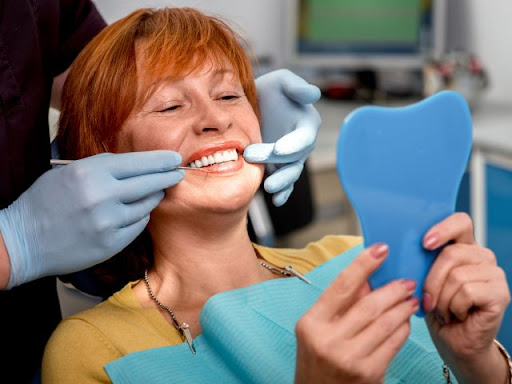The Science Behind Teeth Whitening

In the quest for the perfect smile, teeth whitening has become a popular cosmetic procedure. Whether it’s for a confidence boost or to combat the effects of aging and lifestyle habits, many are turning to this solution. But what exactly happens during teeth whitening, and how does it work its magic? Let’s delve into the science behind this fascinating process.
Understanding the Basics
Before diving into the intricate mechanisms of teeth whitening, it’s crucial to grasp the fundamentals of tooth structure. Each tooth comprises three primary layers: enamel, dentin, and pulp. The outermost layer, enamel, acts as a protective shield for the underlying structures.
The color of teeth is determined by various factors, including genetics, age, diet, and lifestyle habits. Over time, stains accumulate on the enamel surface, causing teeth to appear dull or discolored. These stains can be categorized as extrinsic (occurring on the surface) or intrinsic (embedded within the tooth structure).
The Role of Whitening Agents
At the heart of teeth whitening treatments lie whitening agents, typically hydrogen peroxide or carbamide peroxide. These compounds penetrate the enamel and dentin, targeting the discolored molecules responsible for staining.
Upon application, the whitening agent undergoes a chemical reaction, breaking down stain molecules into smaller, less visible fragments. This process effectively lightens the appearance of teeth, restoring their natural brightness.
Mechanisms of Action
Teeth whitening operates through two primary mechanisms: oxidation and diffusion.
Oxidation
Hydrogen peroxide, the active ingredient in most whitening products, acts as an oxidizing agent. When applied to the teeth, it releases oxygen molecules that penetrate the enamel and react with the pigmented molecules responsible for discoloration. This reaction alters the chemical structure of the stains, rendering them colorless and less conspicuous.
Diffusion
In addition to oxidation, diffusion plays a vital role in the whitening process. As the whitening agent penetrates the enamel, it diffuses into the tooth structure, reaching the discolored molecules within the dentin. This diffusion allows for a comprehensive whitening effect, addressing both surface stains and those embedded within the tooth.

Factors Influencing Results
While teeth whitening can produce dramatic results, several factors can influence the outcome of the treatment:
- Concentration of Whitening Agent: Higher concentrations of whitening agents generally yield more pronounced results but may increase the risk of tooth sensitivity.
- Duration of Treatment: Longer exposure to whitening agents can lead to brighter teeth, but overuse may cause enamel damage.
- Pre-existing Conditions: Certain dental conditions, such as enamel erosion or gum disease, may affect the efficacy of whitening treatments.
Safety Considerations
While teeth whitening is generally considered safe, it’s essential to exercise caution and follow recommended guidelines. Overuse of whitening products or using concentrations beyond what is advised can lead to adverse effects such as tooth sensitivity, gum irritation, or even enamel damage. If you want to read more about the science behind teeth whitening, click now to learn more.
Conclusion
Teeth whitening is a scientifically backed procedure that offers a safe and effective solution for achieving a brighter, more radiant smile. By understanding the mechanisms behind this process, individuals can make informed decisions regarding their oral care regimen. However, it’s crucial to consult with a dental professional before embarking on any whitening treatment to ensure safety and optimal results.

